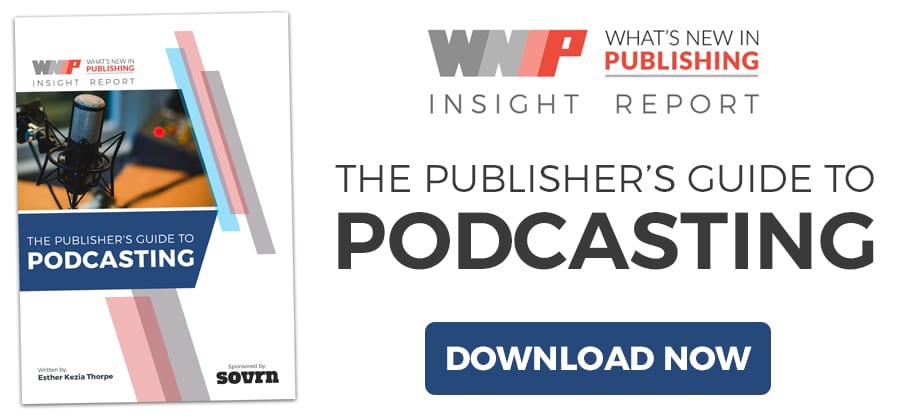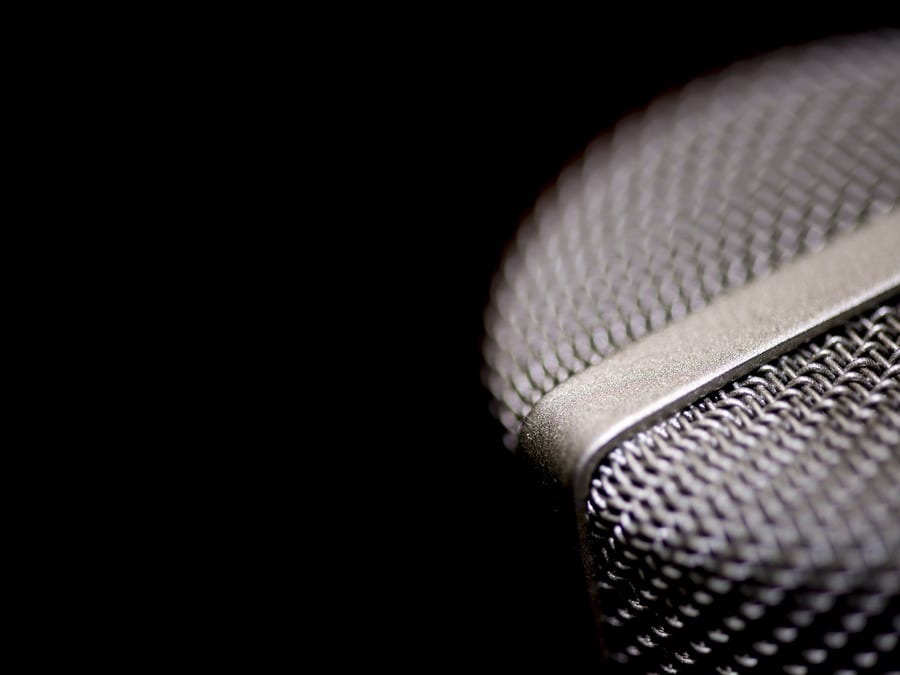|
Getting your Trinity Audio player ready...
|
Choosing to start a podcast is an exciting step, but it’s just one of the many decisions that needs to be made on the journey to podcasting success.
Deciding what your podcast will be about is the most fundamental decision you will make. For many publishers, this may seem like an easy or obvious decision, but it may require more care and thought than anticipated at teh start. Whereas you can make tweaks to the format as the podcast grows, core changes to the topic and structure, once it’s been established, are rarely a good idea.
A good place to start as a publisher is by thinking about the context of the podcast. Is it to enhance the content you already publish as an additional channel, or will it stand alone as another stream of content? Both have their advantages and disadvantages, but deciding this will perhaps narrow down some of the options below, and how much resource to commit to it.
But don’t just consider the obvious. Some of the best publisher podcasts have come about by the team looking at what audio can offer that print and online can’t.
One point to bear in mind when deciding on a topic is that 46% of people who listen to a podcast are between 18 and 34. This is a format which is heavily skewed towards the younger end, which in itself is a real opportunity for publishers looking to reach out to a younger demographic. However, this also influences which topics are likely to do better as a podcast.
Advice on podcast topics varies based on a publisher’s brands, so let’s have a look at some examples of different successful podcasts, and their relationship to the parent publisher.
1: Straightforward brand extension
The most common route publishers choose for podcasts is to talk on the themes their websites or magazines cover. One example of a publisher who does this well is WIRED UK. Their episodes are themed in a similar way to their features; exploring issues around technology and how we as humans interact with it.
The advantage of this method is that it aligns directly with the brand, and can use the expertise of the journalists who write the stories. WIRED‘s journalists enjoy getting involved, work together as a team, and see it as part of the mix of content they produce.
PILOT TV, from the team behind EMPIRE magazine, also do a good job of this. They discuss the hottest TV shows of the week, from the Handmaid’s Tale to Line of Duty, and will often have prominent guests from the TV world joining them.
The New Statesman‘s flagship podcast is another example where the podcast does exactly what you’d expect from the brand – a mix of opinion, features and reviews this week, but in a more accessible, informal tone than the title’s written content. The publisher then has a number of other podcasts, from SRSLY‘s weekly pop culture podcast to The Back Half‘s exploration of the New Statesman‘s arts and book pages, all exploring more niche angles on the main brand.
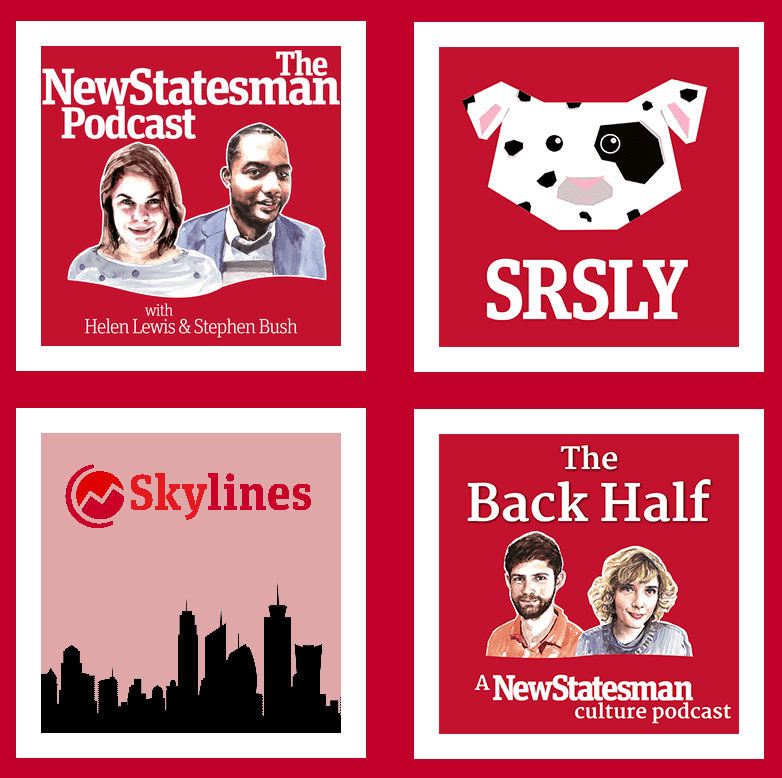
Of course, there are disadvantages too. Chemistry between a team of podcasting presenters cannot be forced, and talented staff writers may not feel comfortable getting behind a microphone.
Getting the right combination of people on board at an early stage is essential to the longevity of the podcast, and making it an enjoyable listening experience for the audience.
2: Issue-based
Issue-based podcasts may have substantial overlap with the brand extension topic outlined above, but have a narrower focus. One example is the BBC’s Brexitcast podcast, which will run until the issue is resolved (!!!). Brexitcast is updated every few days, depending on how chaotic the political situation has become.
Similarly, the New European‘s podcast is issue-based, but also complements their editorial strategy, as their entire publication focuses on the issue of Brexit.
Political themes lend themselves well to this type of podcast. Over in the US, The Washington Post’s weekly Can He Do That? podcast sprung up in January 2017 in response to the number of times readers were asking about Trump’s unconventional approach to the presidency. Each 20 minute episode covers topics from ‘Here’s what happens if Trump imposes tariffs on Mexican imports’ to ‘Trump ordered Russia investigation documents declassified. Can he do that?’ A month after the podcast’s launch, it
had been downloaded more than a million times.
Of course, issue-based podcasts don’t have to touch politics at all. There are a number of examples of one-off seasons of podcasts that are essentially longform audio documentaries, from the Australian’s Bowraville, chronicling the investigation into Australia’s least-known serial killings, to the LA Times’ Dirty John, which has since become a Netflix series.
“When you listen to a podcast every week, it inevitably becomes a real presence in your mind, in the way that reading a writer’s articles does not. There’s an intimacy with podcasts that makes people interested in getting more.”
Slate Plus Editorial Director Gabriel Roth10
Issue-based podcasts will be much easier to get a short-term plan together for in terms of content, but it may also be harder to sell advertising against if the issue is controversial, or if audience numbers don’t grow quickly.
3: News-based
News organisations like the Guardian and The Telegraph are clear candidates for this kind of podcast, but more niche news-based brands are also able to make use of this format for everything from technology to sports.
The disadvantage news-driven podcasts have when compared to the other formats is that they age very quickly, and it’s much less likely that older episodes will pick up listeners.
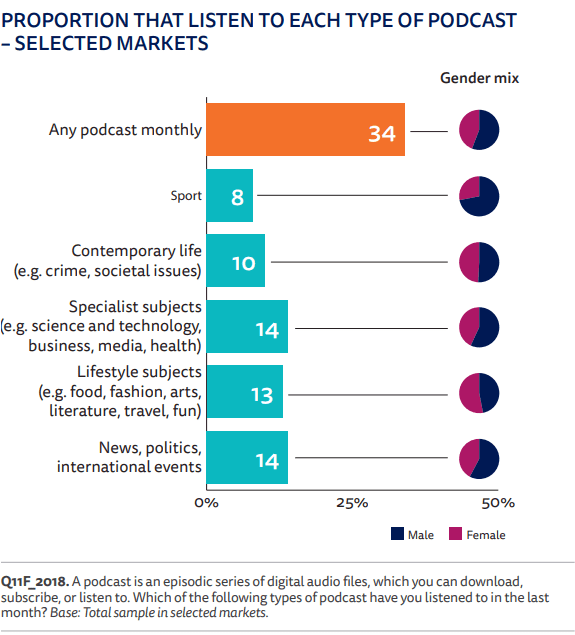
Podcasts reliant on news will also by nature need to be much more frequent. Weekly, or even daily episodes complement this format better than a monthly, longer episode, and will need dedicated resource and a process established early on to ensure success.
In fact, the daily news podcast is now a crowded market. Over the past 18 months, daily general news podcasts have been launched by a number of publishers, from The Washington Post, NPR, Vox and CBC to the Guardian, The Economist, Slate, and even the Evening Standard just last week.
These have become much more attractive following the overnight success of The New York Times’ The Daily, which reportedly has more than two million listeners tuning in each day to its 20-minute episodes since launching in 2017.
So if you’re thinking about doing a daily news podcast, there are two things to consider. Firstly, it has to stand out from the crowd, and that means that unless you have an exceptionally large or strong news readership, a daily podcast may not be the best idea.
Secondly, it changes the way success metrics are measured. Few people will go back and listen to old episodes, and so historic listener numbers aren’t going to play a part in the success story.
However, the nature of high-frequency publishing means that a larger audience can be built up very quickly, and if your primary focus is to cement your brand into the daily routines of your readers, a short daily podcast has potential. The Guardian‘s daily podcast Today in Focus is the most popular of its ten podcast titles, and claims almost a quarter of all podcast listens for the publisher.
4: Complementary topics
Echoing niche newsletter strategies, some publishers are choosing to build a podcast on a complementary topic rather than as a direct extension of what they already cover. UK newspaper brand Metro has a podcast about mental health called Mentally Yours. This involves having a mystery guest on each week to talk about ‘all the weird stuff going on in our minds’, and is definitely not one of Metro‘s core news topics.
Metro isn’t the only publisher with a mental health podcast. Reach PLC launched No Really, I’m Fine earlier this year to discuss mental health issues. The publisher is also behind a number of other well-known podcasts such as Pod Save the Queen, and Black Mirror Cracked. The latter proved a hit as it went live on the same day as the Netflix series, shooting straight to number 2 in iTunes.
“Having written about Black Mirror in 2016 when the first Netflix series came out, and had good numbers and SEO value from that, I thought a podcast would give us an extra edge, particularly in the US where the show has such a good audience and where podcasts are so popular.”
Suchandrika Chakrabarti, Black Mirror Cracked20
Some publishers are finding inventive ways to use back catalogues of content and other historic assets to create podcasts.
DC Thomson launched a new podcast called Pass It On, which is based on household tips from The Sunday Post in the 1950s. The team discusses what can be learned from generations before them based on the tips which were submitted by housewives of the 50s on the correct running of a household.
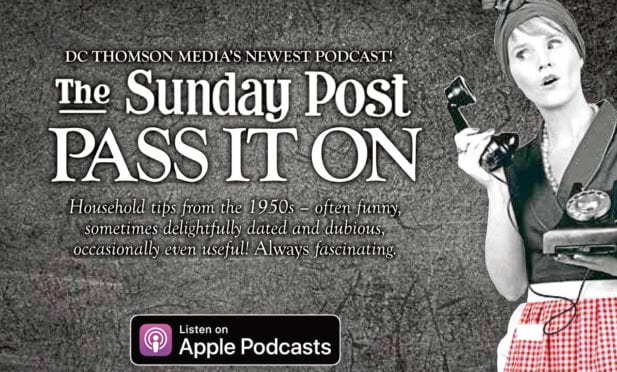
5: Interviews
This is a classic podcast format, and one that can be easily adopted if a publisher’s writers already speak to relevant people as part of their day job. Interviews have the benefit of working well for both mass consumer media brands and very niche brands, as well as B2B publishers.
Recode Decode, Recode‘s podcast is a good example of this. Recode cover technology and media, and have an excellent network of influential industry figures. Editor-at-large Kara Swisher does lengthy in-depth interviews with figures such as Elon Musk, Ev Williams and Nancy Pelosi which are then released as episodes every couple of days, as well as providing source material for new stories for the site.
Grazia is one of the many B2C publishers to utilise the interview format for a podcast. Their Grazia Life Advice series features 25-30 minute interviews with ‘women worth listening to’ on the best and worst life advice they’ve been given. Guests have included Bake Off winner Nadiya Hussain and #MeToo campaigner Rose McGowan.
Another well-known publisher podcast using the interview format is EMPIRE. They describe the podcast as ‘an assortment of irreverent, film-related chat, as well as interviews with Hollywood’s best and brightest.’
Although EMPIRE has an advantage with guests due to their subject matter, they’re a great example of how much of a difference a Hollywood star can make, and the EMPIRE team make sure they put the interview to good use across different platforms.
6: Narrative-based
Storytelling is a popular format for independent podcasts. In fact, it was this style that put podcasts back on the map when Serial launched in 2014, where a nonfiction story is narrated over multiple episodes. Although not produced by a publisher, it’s a brilliant example of the narrative format, and episodes of seasons one and two have been downloaded over 340 million times: an ongoing podcast world record.
Narrative-based podcasts can be both non-fiction, like Serial, or fiction. Marvel Comics have made use of podcasts to extend the Wolverine brand, with a scripted podcast serial featuring the comic book character, and starring actor Richard Armitage. Ironically, the podcast series was such a success that a comic adaptation of the story has since been published by Marvel.
7: Mix and match
Any of the above can be mixed and matched to find the right blend for your brand; something which publishers are experimenting with as their confidence in podcasting grows.
One neat example which launched at the beginning of this year is The Economist’s The Intelligence, hosted by the former editor of their award-winning Espresso app. They describe it as a ‘daily news-analysis podcast’, which contains a blend of news, an explainer or feature, and some unusual facts or statistics. This blend of Espresso brand extension and news fits perfectly with what The Economist wants to be to its readership; intelligent and useful.
Podcasting is an opportunity to think outside the box when it comes to deciding what yours will be about. Try and explore what audio can add to your brand beyond what you already do, and enjoy experimenting!
This article is adapted from the second chapter of The Publisher’s Guide to Podcasting; WNIP’s 50 page how-to for publishers looking to get started in the world of audio. It covers putting a business case together, what equipment is needed to start, and how podcasts around the world are being used to drive key business goals. Download it for free here.
